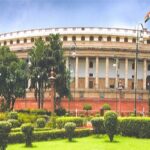The undeclared ongoing nationwide closure of ATM counters, unavailable of cash and the situation of post 8th November 2016 remind us almost similar situation caused due to demonetisation. Many may disagree with West Bengal Chief Minister Mamata Banerjee, who said it a ‘financial emergency’ in the country. But everyone in the country shall agree that the cash crunch that has hit the people hard in the last fortnight reminds them of the worst horrors of the post-demonetisation period in 2016.
As ATMs across the country, more horribly in western Indian states, run dry, people wonder if the sacrifices they made at the PM’s exhortation then were worth it at all. A year and half after currency notes of Rs. 500 and Rs. 1000 denomination, representing over 85% of cash in circulation, were withdrawn, not one of the direct objectives of demonetisaion could be fulfilled. We failed to progress towards a ‘less cash’ economy. There is about 30% less of cash in the market at present than there was on November 8, 2016 when we calculate the GDP growth, inflation and availability of high value denomination notes.
After demonetization, everyone expected that high value notes will not be circulated again to curb black money. But the apex bank introduced Rs.2000 rupee notes, which turned darling for the rich. Many experts had questioned the wisdom of introducing currency notes of Rs.2000 denomination purportedly because of their contribution to the black economy. Black money shows absolutely no signs of loosening its stranglehold on the economy. There has been no let up in terrorist attacks or Maoist depredations. Today, the duplicate notes are available in the market, which funds the terrorists. In the light of all this, the people have started doubting the fiscal management capacity of the Modi government.
We scrapped Rs. 15.44-lakh-crore currency notes and replaced the same amount of cash with lion’s share of Rs. 2000 notes in circulation. It was certainly a blunder. Prior to demonetization, the total banknotes in circulation were valued at Rs.17.77 trillion. In its annual report of March 2016, the apex bank stated that total bank notes in circulation valued Rs.16.42 trillion of which nearly 86% (around Rs.14.18 trillion) derived from Rs.500 and Rs.1,000 banknotes. Considering the passage of time, growth in GDP and our cash driven economy, total banknotes in circulation could have touched Rs.20.00 trillion by March 2018, failing which, cash crunch can’t be avoided.
The demonetisation was initially seen as a significant step towards making India a cashless economy. Prime Minister Narendra Modi appealed to Indian population in his radio address in Dec 2016 to go cashless with slogan – ‘Less-cash’ first, ‘cashless society’ next. But we returned to more cash society.
The government and the RBI have come out with reasons to explain the current cash crisis. The government has attributed it, at least partly, to higher procurement of grains under MSP while the RBI would have us believe that it has been caused by problems of logistics and the slow pace of recalibration of ATMs to for the newly introduced Rs. 200 notes. But the reason that appears most convincing has understandably come from other quarters. As per this reasoning, the current cash crunch has to do with the Assembly elections scheduled in Karnataka next month. What lends credence to this reasoning is the seizure of cash worth Rs. 32 crores and items like liquor and other contraband, gold and silver worth several crores more in the poll bound state. As is only to be expected, this seizure could well be the proverbial tip of the iceberg.







































